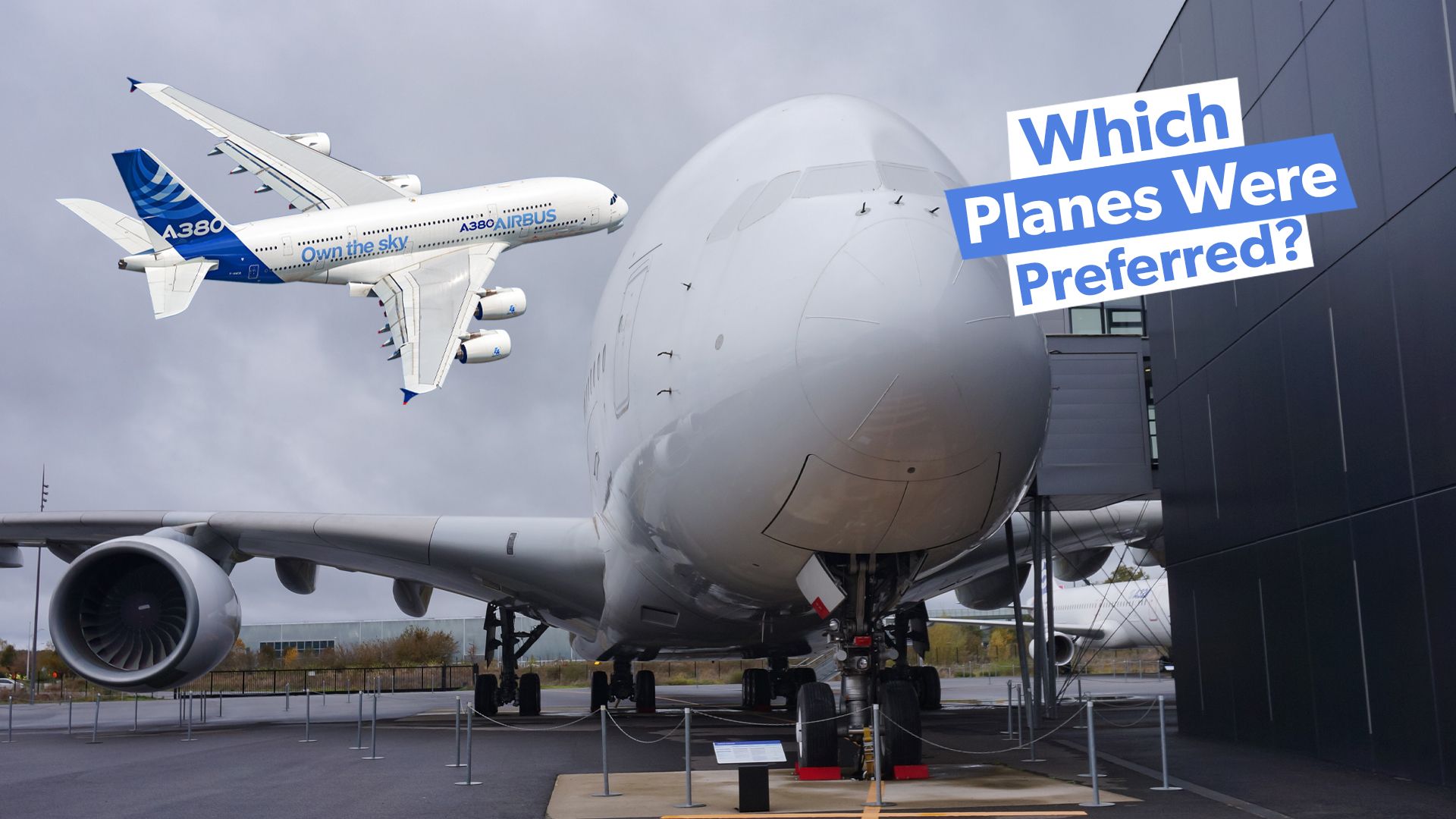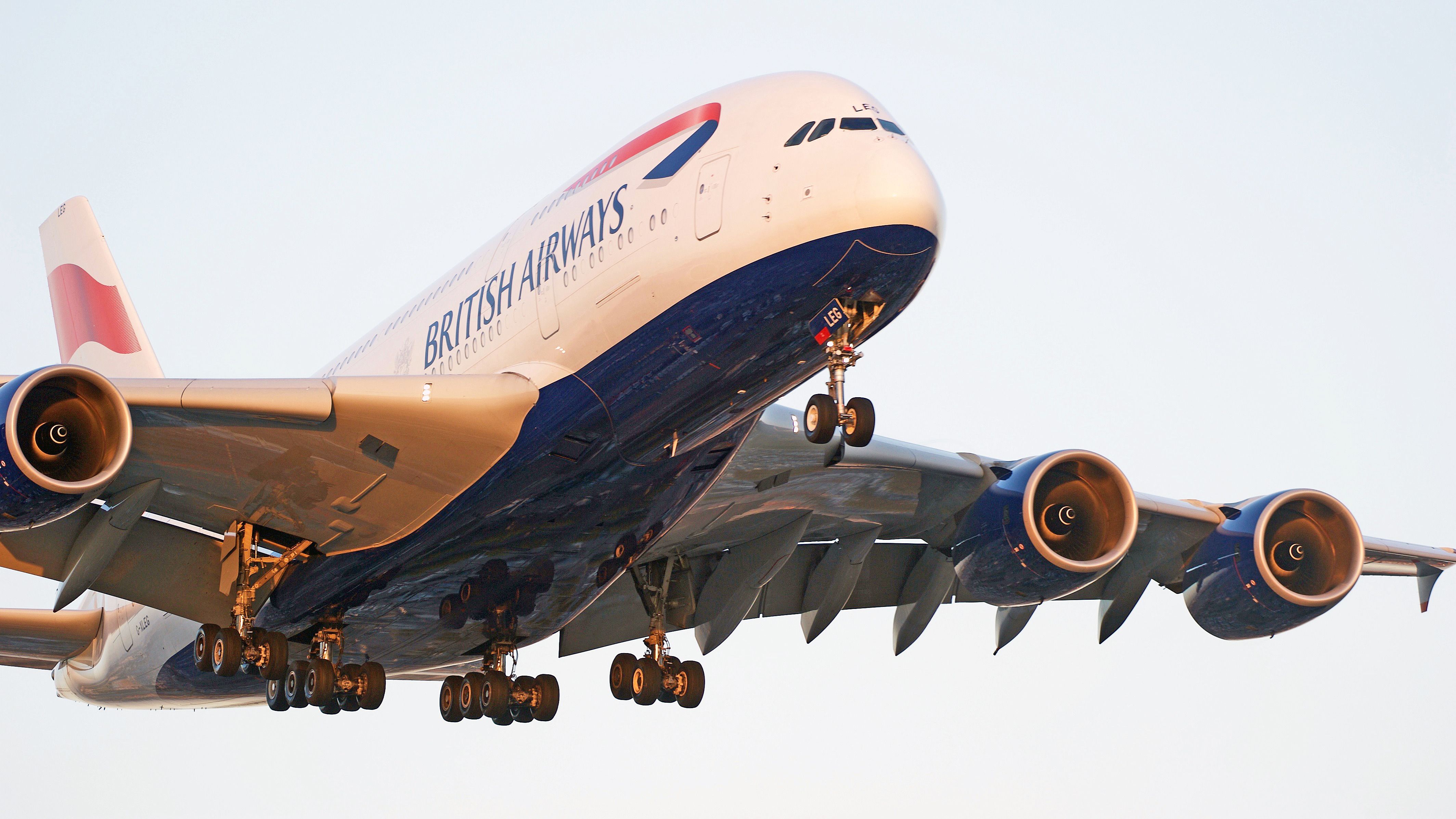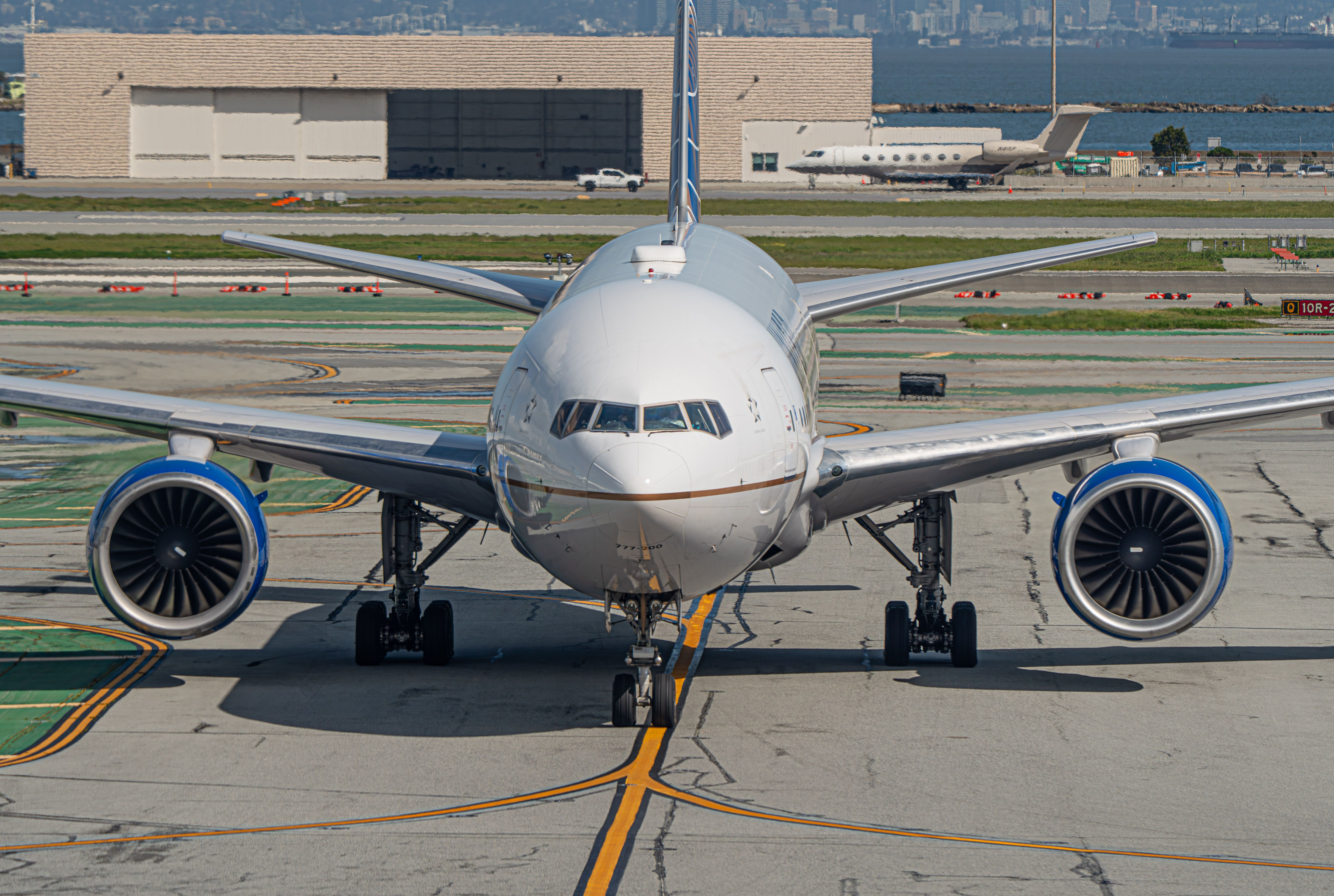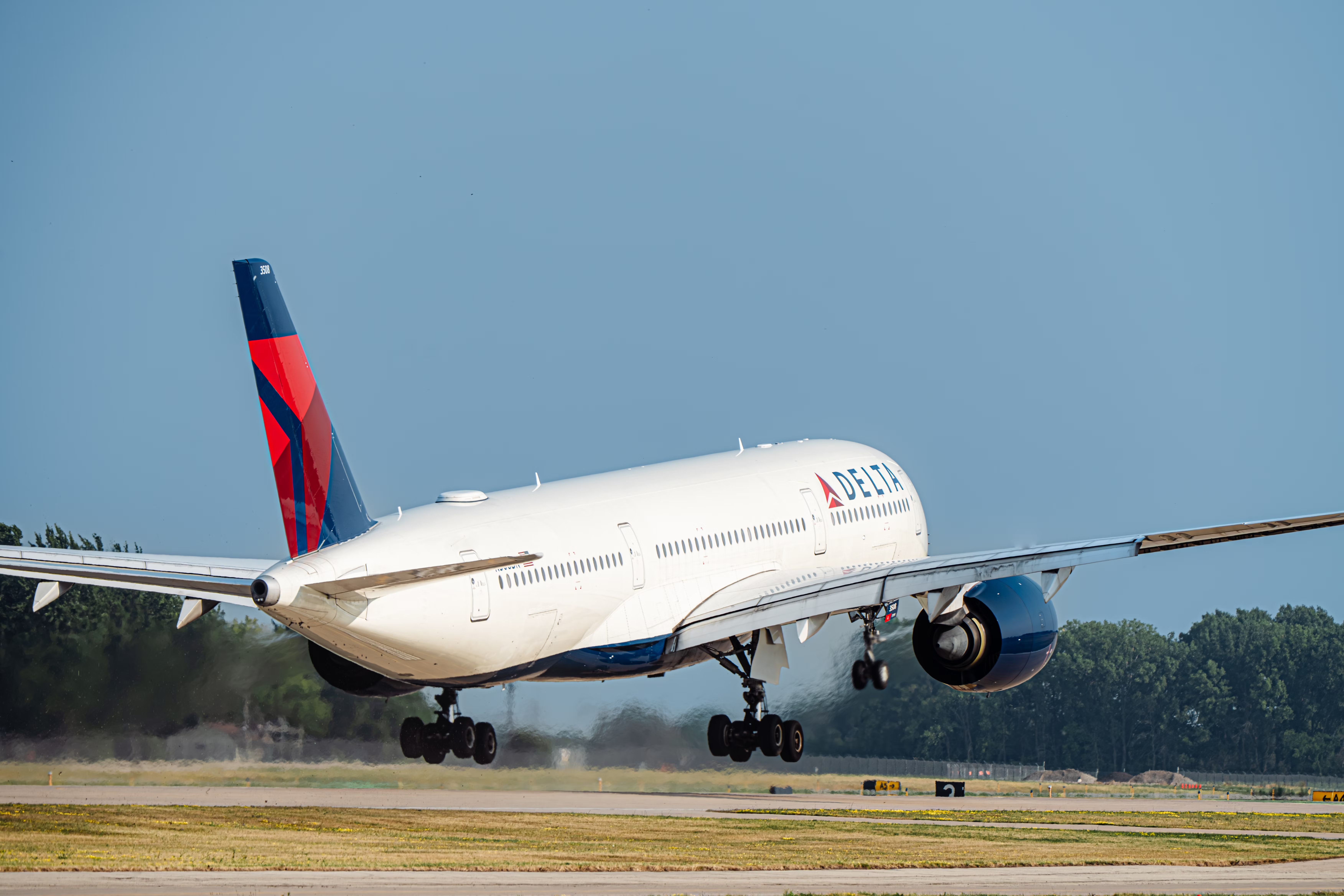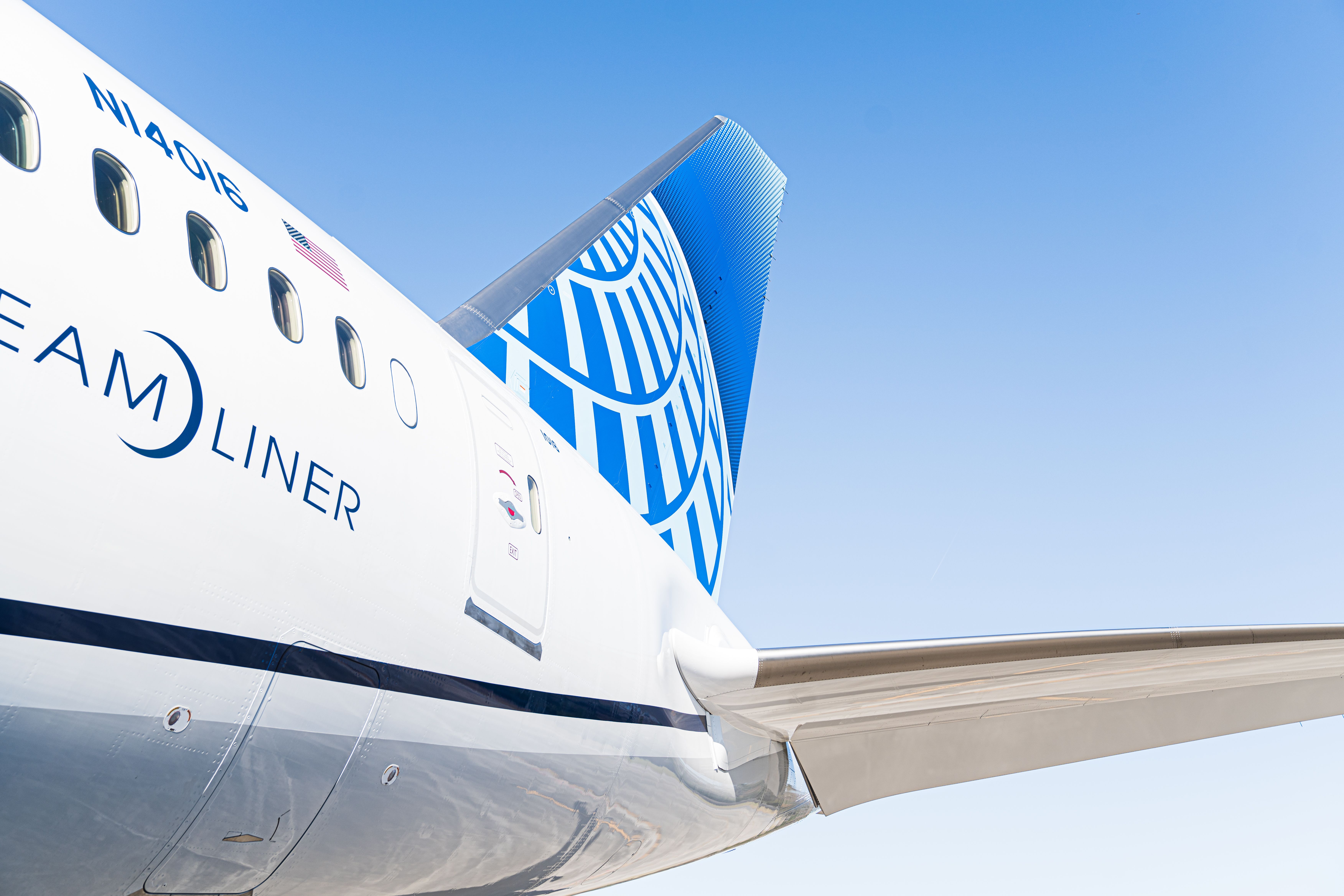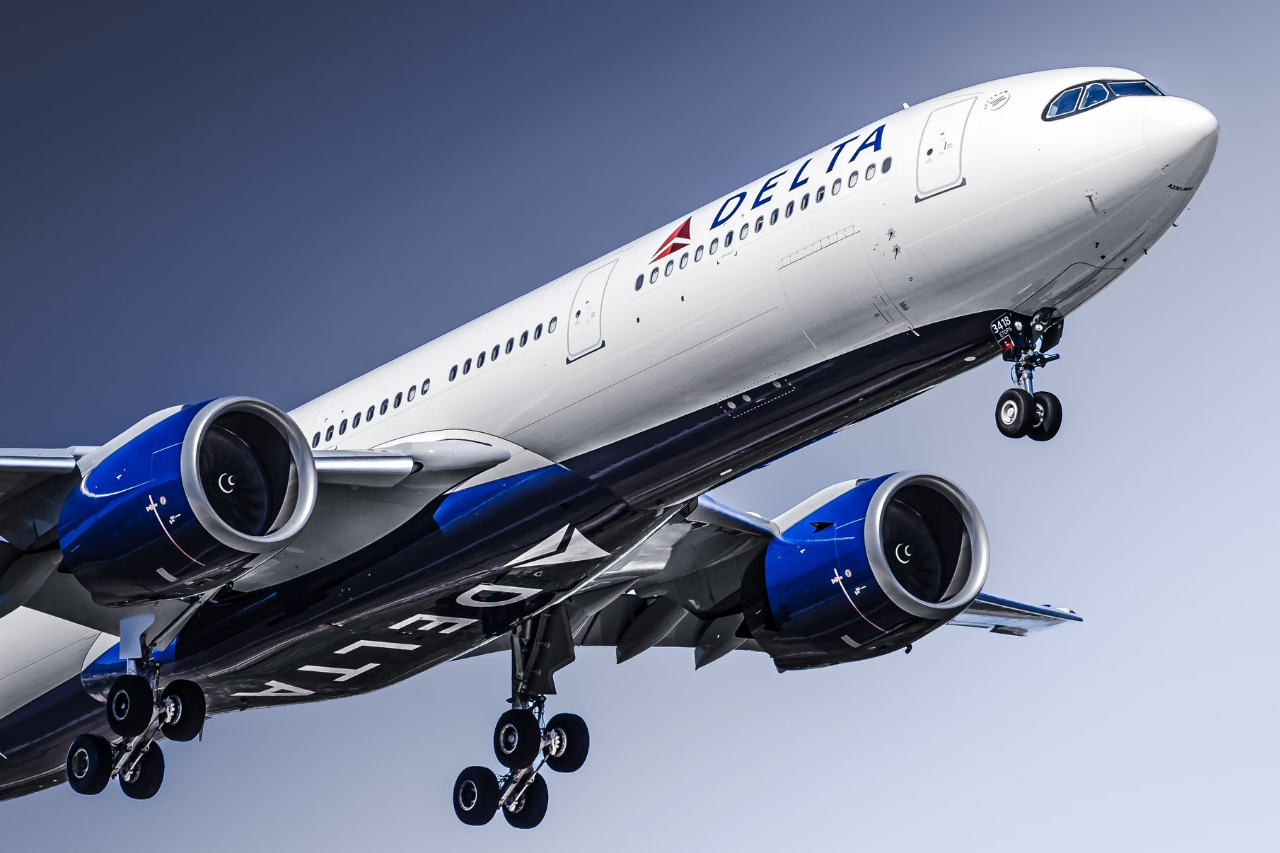The
Airbus A380
is the largest commercial passenger aircraft ever built. Following the success of its rival’s Boeing 747, Airbus decided to produce another quad-jet aircraft, but its first double-decker. The A380 first flew in 2005 and entered service in 2007 with
![]() Singapore Airlines
Singapore Airlines
. The inaugural flight was from Singapore to Sydney on October 25.
Airbus developed the A380 to meet increasing demand for high-capacity, long-haul flights. Before Airbus announced the A380 in December 2000, the last
Boeing 747
was the -400, which was announced in 1985 and entered service in 1989.
The announcement of the A380 was major, as Airbus had not developed a double-decker aircraft. Marketed to compete with the 747-400, the A380 was said to have 49% more floor space than the -400, and could carry between 555 and 840 people.
Photo: Philip Pilosian | Shutterstock
According to an old report from CNN, customers considered placing shops, stand-up bars, crèches and specialised business centres with video conferencing, and e-mail facilities on the aircraft. At the time, an Airbus spokesperson said that with the extra space, airlines wanted to provide the highest level of service possible.
No American carrier ever placed an order for Airbus’ double-decker throughout its 18-year production. Though one of the largest aviation markets in the world is in North America, a trend began in which airlines shifted to smaller, twin-engined widebodies for long-haul operations. Delta Air Lines and United Airlines operated the 747, but opted to add other aircraft to their fleets instead.
The A380 has been extremely successful for airlines with one large hub, like Emirates (the world’s largest operator of the A380),
British Airways
, Etihad Airways, Singapore Airlines, and more. In the United States, airlines have several hubs throughout the country, and passengers in the US have a broader choice in departure cities to their destinations. For example, in September, there are flights from 32 US cities to London.
Because US airline operations are more widespread, the A380 would be more difficult to operate. Maintenance costs were another major factor keeping US airlines from ordering the aircraft.
1
Boeing 777
five variants
- 777-200
- 777-200LR
- 777-200ER
- 777-300
- 777-300ER
The Boeing 777 family is one of the most successful aircraft families that Boeing has developed. Formally launched in October 1990, the 777 then entered service with United in June 1995. The first variant developed was the 777-200, and the first-ever 777 is still in service with United today.
Photo: Lukas Souza | Simple Flying
Over an 11-year span, 13 airlines ordered 139 777-200s. United was the largest customer, with orders for 40 of the type. Today, the airline operates the -200 in two configurations, one for domestic flights, with a 2-4-2 first class configuration, and another for international flights and its Polaris business class.
2
Airbus A350
two variants
The Airbus A350 is currently only flown by one US airline, Delta Air Lines. Announced in July 2006, the plane was created to compete with Boeing’s 787 Dreamliner program, which was announced three years prior. Delta did operate the Boeing 777 but was looking for a replacement for its Boeing 747 aircraft when it chose the Airbus A350s.
Photo: Lukas Souza | Simple Flying
Delta’s initial order for the A350 was placed in 2014 for 25 A350-900s. The Atlanta-based airline received its first plane in 2017 and has grown its fleet since, even adding the A350-1000 to its order book earlier this year. United has an A350 order that it has deferred several times, and American Airlines did the same after inheriting the order from US Airways.
3
Boeing 787
three variants
As mentioned above, the
Boeing 787
was announced in 2003. This was Boeing’s first clean-sheet airframe in the 20th century. Its maiden flight was six years after the program was first announced, and it entered service with Japanese carrier All Nippon Airways (ANA) in October 2011.
According to Boeing’s order book, 2,378 787s have been ordered by airlines and lessors worldwide to date. The American manufacturer developed three variants of the 787: the -8, -9, and -10 (commonly referred to as 787X).
Photo: Lukas Souza | Simple Flying
The most popular variant is by far the -9, which totals more than half of the family’s orders. Data shows that 1,396 -9s have been ordered to date, while the -8 has 675 orders, and the largest variant, the -10, only has 307. United Airlines is the only US airline operating the -10, deploying it on routes like San Francisco—Singapore and Chicago—São Paulo.
Nearly 25% of the world’s Dreamliners were purchased by American companies, whether airlines, lessors, or private operators. According to Boeing, 548 787s have been ordered by companies from the US. In December 2022, United Airlines placed the largest Boeing 787 order in history, with 100 firm orders and another 100 options.
4
Airbus A330neo
two variants
- A330-800 (less than 20 orders worldwide, none by US airlines after Hawaiian Airlines canceled its order)
- A330-900
By the time the Airbus A330neo was announced, the A380 had been flying for seven years. The European manufacturer had previously considered updating the A330, but those plans never came to fruition. In 2014, the A330neo was announced, and TAP Air Portugal was the first airline to operate the type in 2018.
Photo: Spyros Vasileiou | Shutterstock
In the US, Delta is the only operator of the A330neo, having chosen Airbus’ latest widebodies to lead the future of its long-haul fleet. According to ch-aviation, Delta has 29 A330neos and another ten are on order.
Despite operating the first generation of the A330s, American Airlines decided in 2018 that it would not purchase the latest-generation aircraft, and rather, pushed forward for the Boeing 787. At the time, American had been considering a replacement for an order that US Airways had placed for A350s, and ultimately did not take either aircraft.
